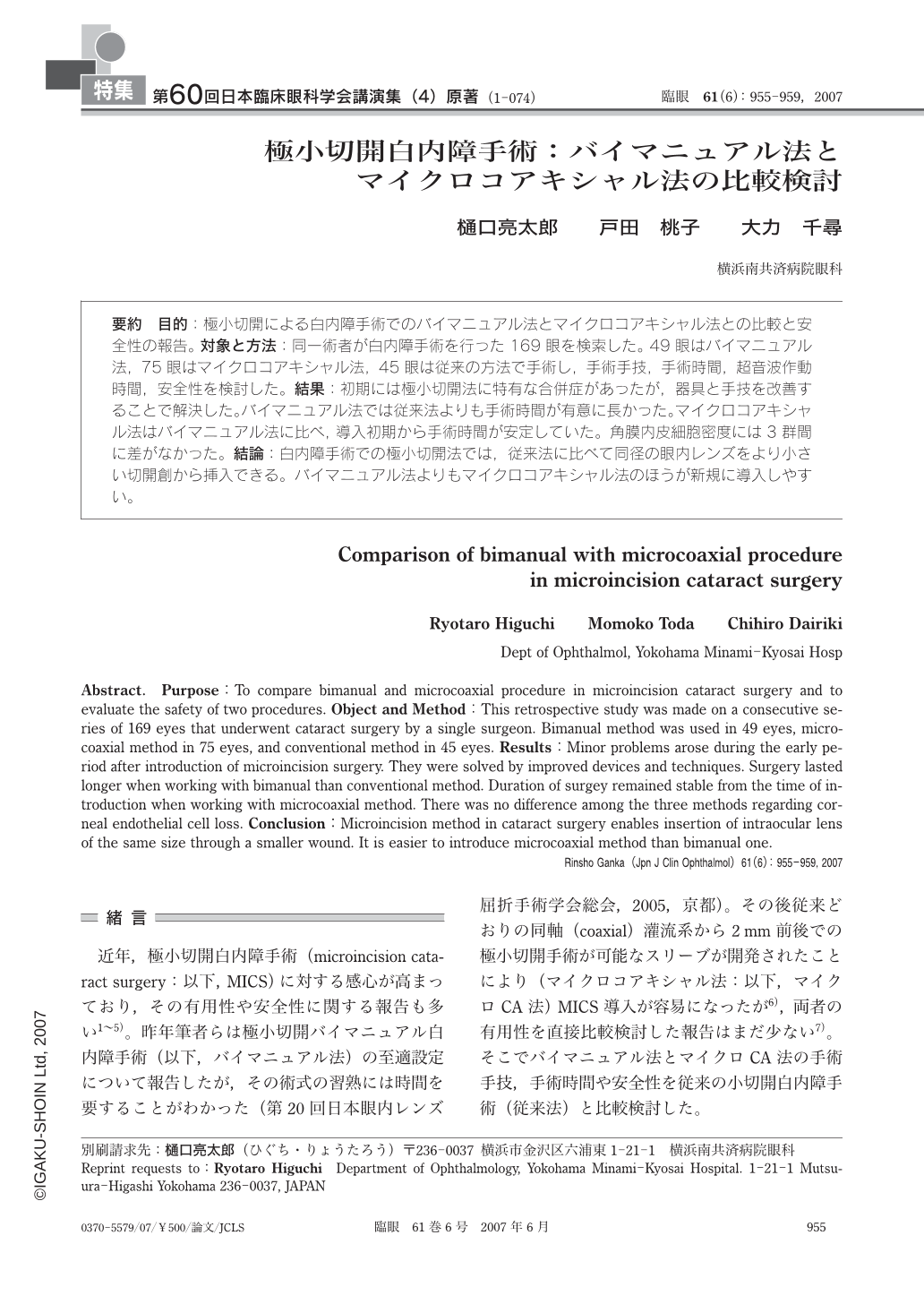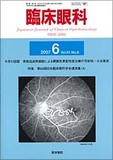Japanese
English
- 有料閲覧
- Abstract 文献概要
- 1ページ目 Look Inside
- 参考文献 Reference
要約 目的:極小切開による白内障手術でのバイマニュアル法とマイクロコアキシャル法との比較と安全性の報告。対象と方法:同一術者が白内障手術を行った169眼を検索した。49眼はバイマニュアル法,75眼はマイクロコアキシャル法,45眼は従来の方法で手術し,手術手技,手術時間,超音波作動時間,安全性を検討した。結果:初期には極小切開法に特有な合併症があったが,器具と手技を改善することで解決した。バイマニュアル法では従来法よりも手術時間が有意に長かった。マイクロコアキシャル法はバイマニュアル法に比べ,導入初期から手術時間が安定していた。角膜内皮細胞密度には3群間に差がなかった。結論:白内障手術での極小切開法では,従来法に比べて同径の眼内レンズをより小さい切開創から挿入できる。バイマニュアル法よりもマイクロコアキシャル法のほうが新規に導入しやすい。
Abstract. Purpose:To compare bimanual and microcoaxial procedure in microincision cataract surgery and to evaluate the safety of two procedures. Object and Method:This retrospective study was made on a consecutive series of 169 eyes that underwent cataract surgery by a single surgeon. Bimanual method was used in 49 eyes, microcoaxial method in 75 eyes, and conventional method in 45 eyes. Results:Minor problems arose during the early period after introduction of microincision surgery. They were solved by improved devices and techniques. Surgery lasted longer when working with bimanual than conventional method. Duration of surgey remained stable from the time of introduction when working with microcoaxial method. There was no difference among the three methods regarding corneal endothelial cell loss. Conclusion:Microincision method in cataract surgery enables insertion of intraocular lens of the same size through a smaller wound. It is easier to introduce microcoaxial method than bimanual one.

Copyright © 2007, Igaku-Shoin Ltd. All rights reserved.


